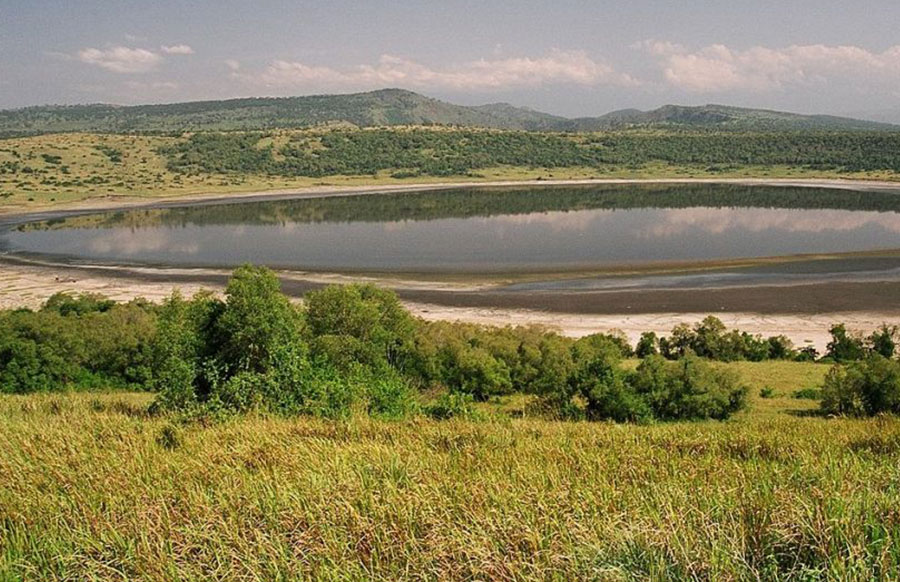Previous
Next
The Batwa Tribe
The Batwa are a tribe in South western Uganda. They belong to the Bantu ethnic group and are part of the larger Batwa community who are the original inhabitants of the forests surrounding Uganda, Rwanda, Burundi and DR. Congo. They are pygmies “short people” and originally survived on forests as hunters and forest gatherers, gathering fruits and honey.
The Ugandan Batwa are Uganda’s oldest-surviving community. They are believed to have inhabited present-day Uganda for the last 4,000 years, long before the Bantu and Nilotic migrations which brought other communities to Uganda. These Batwa are the original inhabitants and custodians of Bwindi and Mgahinga forests, both of which were made national parks in 1991, causing the Batwa to inhabit regions around these forests. These regions are in Kisoro, Kabale, and Kanungu Districts.
The Ugandan Batwa are believed to have migrated from the Ituri Forest of the DR Congo in search of wild animals to hunt, hence the name Kisoro, which literally means “the area occupied by wild animals”. These Batwa are also called “Echuya Batwa” because they are majorly found around Echuya Forest Reserve in Kisoro and Kabale Districts.
There are approximately 3,463 Batwa (Batwa Census Report, 2016) in Uganda making up 0.1 per cent of the overall Uganda population. The loss of their original land and way of life to forest conservation, has made them a point of concern as regards their survival. Efforts are ongoing to assist them cope with non-forest life.
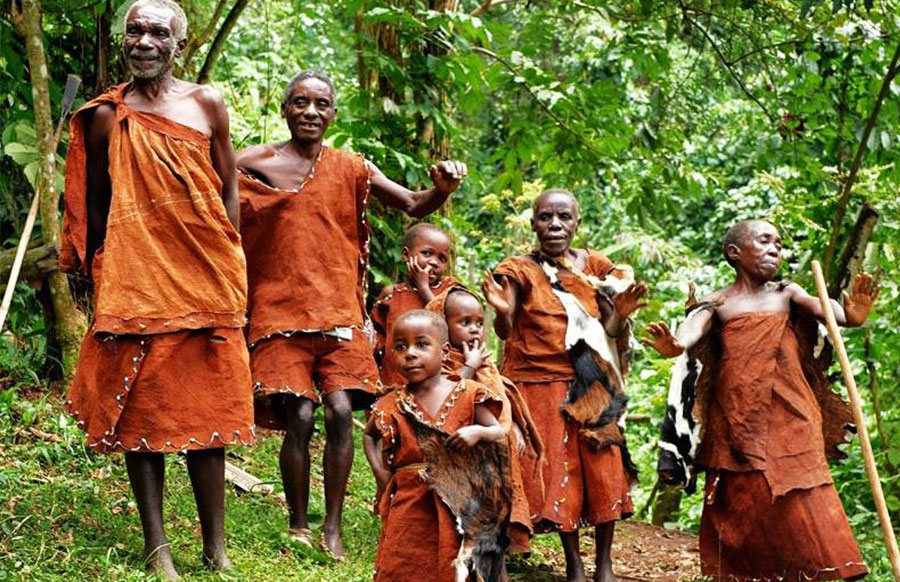
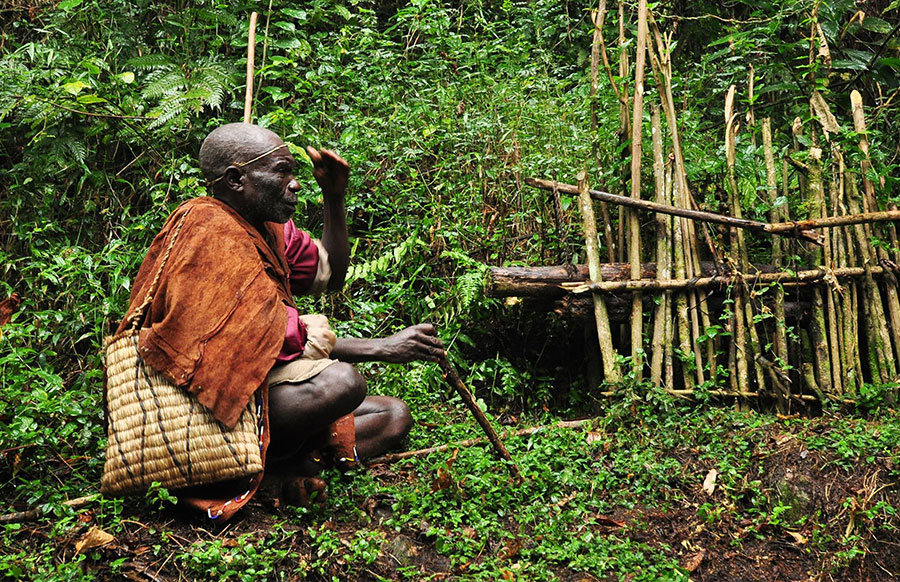
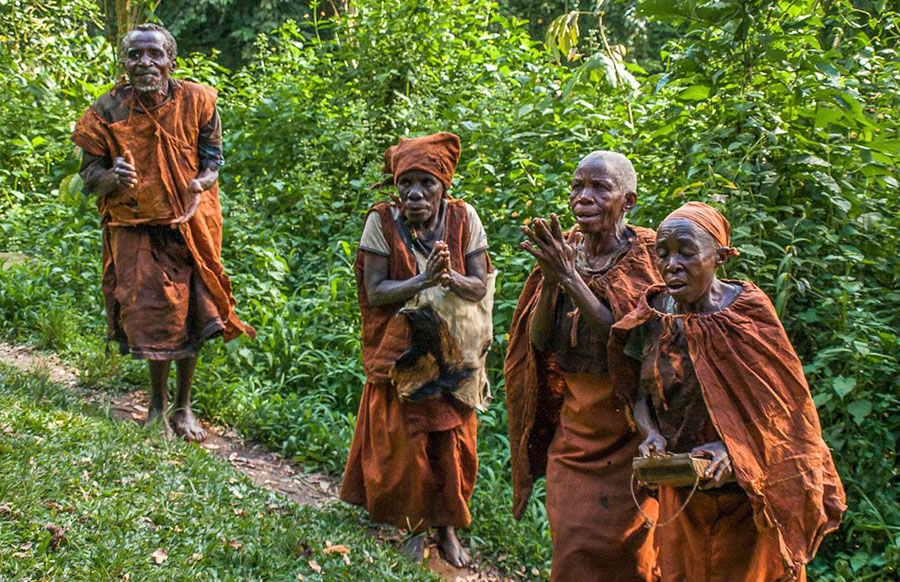
The Batwa currently live in small huts on the edges forests. These huts are mainly made from sticks, mud and grass. Some Batwa would live in structures constructed up in tree branches.
A full demonstration of the Batwa way of life can be experienced on a Batwa cultural trail in Bwindi Impenetrable National Park and Mgahinga Gorilla National Park. This experience is one of the popular tourism experiences in Uganda. The Batwa’s tactics of war, which involved expert sniper tactics with the bow and arrow, made them fierce warriors during their battles with intruders. One such battle was with the Bakiga in the late 19th Century in which the Batwa emerged superior. The Batwa had seen the Bakiga’s farming activity as a threat to their forests. The Bakiga are also a tribe in Uganda.
It’s important to note that due to intermarriages with other tribes, some of the Batwa are tall.
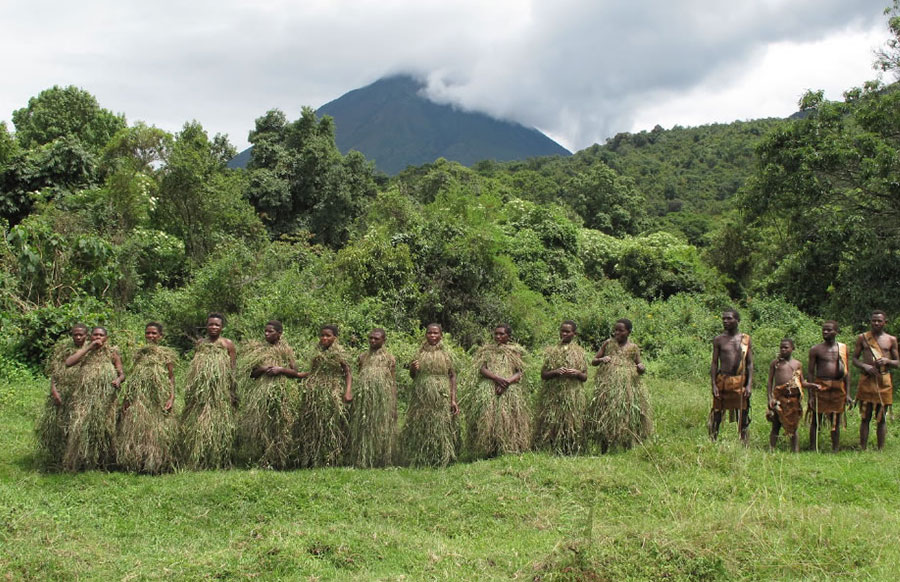
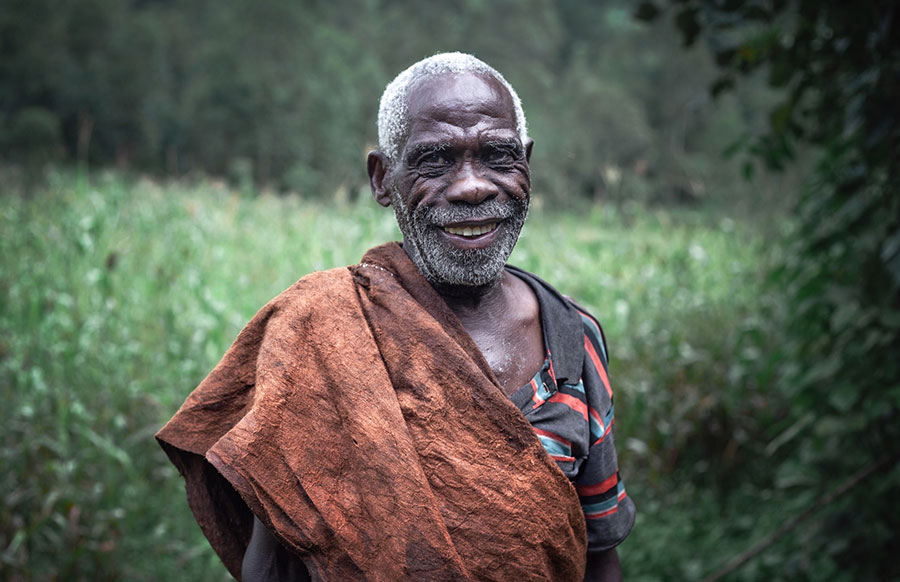
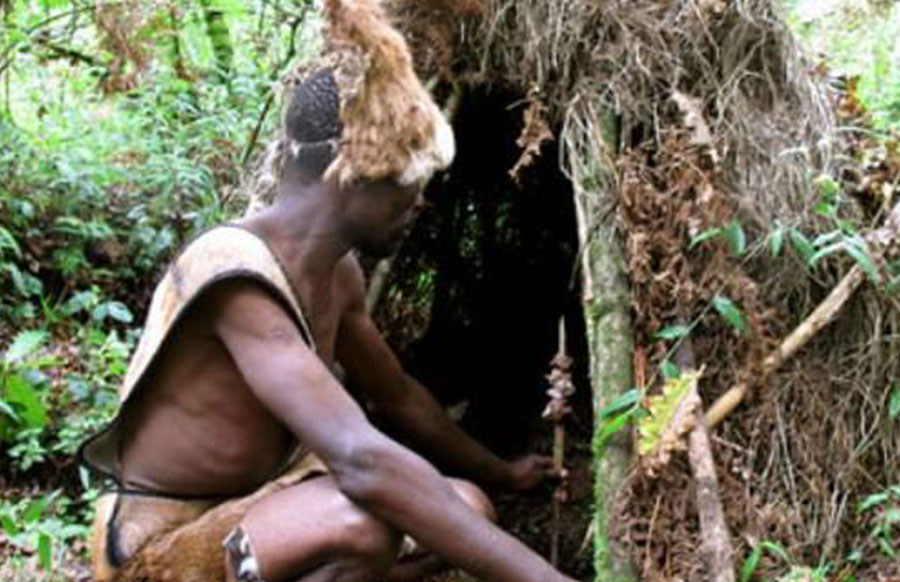
The Bafumbira
The Bafumbira tribe: Guardians of the Heart of the Pearl of Africa, Lake Mutanda and the history of Mountain gorilla tourism in Uganda, highland people. The Bafumbira are a tribe in South western Uganda in the beautiful highlands of Kisoro on the border of Uganda and Rwanda. Just like the Kigezi region, Kisoro region has a geography and climate that is similar to that of Switzerland. After Winston Churchill called Uganda the Pearl of Africa in 1907, Kisoro’s amazing geography caused Kisoro region to be called the Heart of the Peal of Africa.
The Bafumbira belong to the Bantu ethnic group and they were previously part of Rwanda. They automatically became Ugandans after the 1910 Anglo-German Agreement that modified part of the boundary between colonial British and German territories. The same happened to the Bakiga who were on the Uganda side after the boundary modification.
The Bafumbira are agricultural people. They farm on the hills in the Kisoro highlands, farming sorghum, sweet potatoes, yams, beans, groundnuts, vegetables, cassava, bananas, tea, coffee among other crops. Their farming is done on the different plots on the hills just like the Bakiga, which gives Kisoro region a beautiful scenery at the backdrop of the Virunga volcanoes.
Their staple food is sorghum which is cooked, if harvested fresh, or eaten raw if harvested dry. Sorghum is also ground to make flour from which a variety of drinks are prepared.
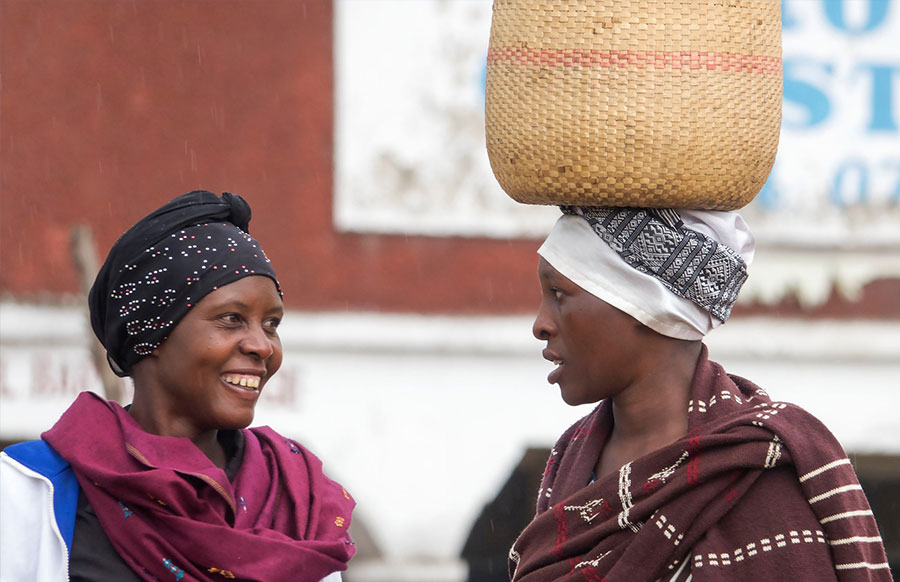

The Bafumbira are the custodians and guardians of Lake Mutanda, a beautiful and popular lake with incredible views of the Virunga volcanoes. This lake gives one of the best photographic experiences in Uganda. The Bafumbira are also the custodians and guardians of the history of Mountain gorilla tourism in Uganda. Walter Baumgärtel who founded Mountain gorilla tourism in Uganda in 1955, was based in Kisoro at Travellers Rest Hotel, Kisoro. Also, Kisoro is home to the two Mountain gorilla national parks in Uganda: Part of Bwindi Impenetrable National Park and Mgahinga Gorilla National Park.
The Bafumbira officially became a tribe in Uganda in 1969 after Rwandans who had moved to Kisoro during the 1959 Rwanda genocide identified themselves as part of Bufumbira County, which at the time was part of Kigezi District in Uganda. The population census confusion that was experienced in the Bufambira County led the Parliament of Uganda to officially recognise the Bafumbira as a Ugandan tribe. The Bafumbira speak Rufumbira language and practice Kinyarwanda culture.
There are 713,231 Bafumbira (2014 census) in Uganda. The Bafumbira are mainly found in Kisoro District.
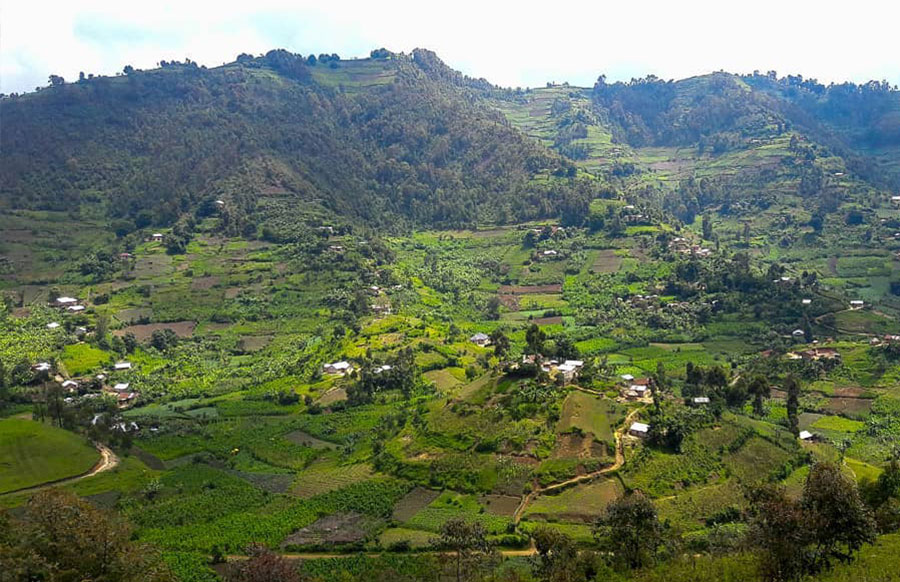
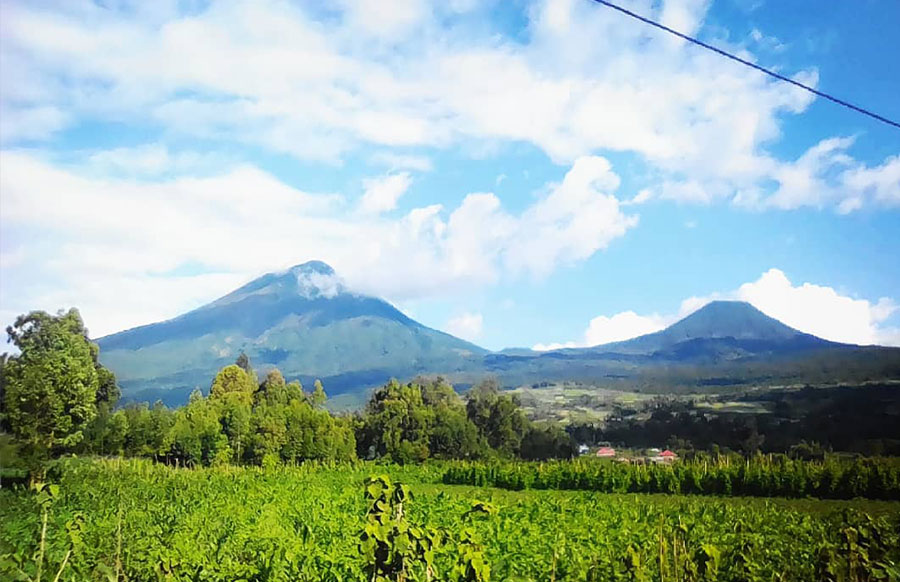
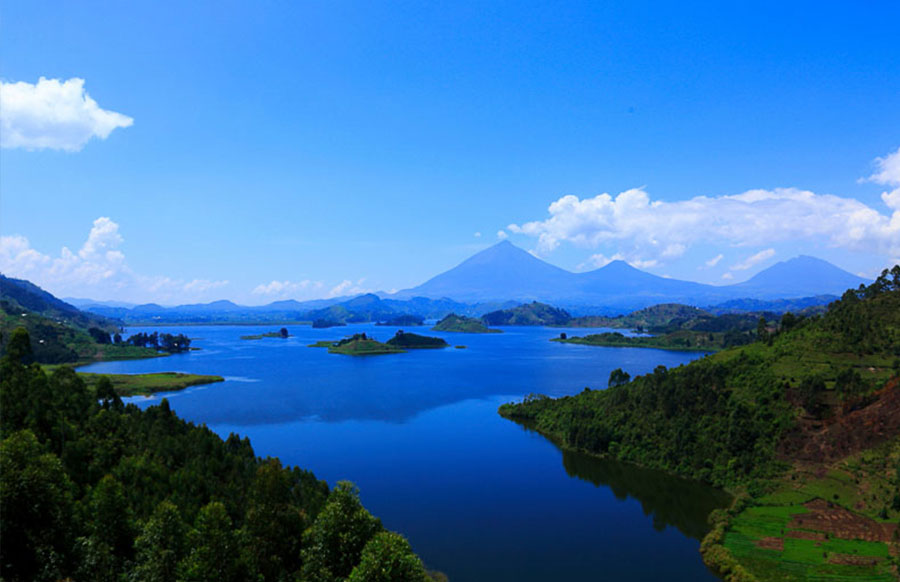
The Bagwere Tribe
The Bagwere are a tribe in Eastern Uganda South East of Lake Kyoga. The Bagwere belong to the Bantu ethnic group and they came from Bunyoro Kitara kingdom, which also came from the 13th century-Bantu Chwezi Empire. Their founding prince is believed to be Prince Isingoma Labongo Rukidi who was a prince in the 16th century Bunyoro Kitara kingdom. The Bagwere are governed in clan system which comprises of 86 clans.
The Bagwere are both agricultural and fishing people. They farm rice, soy beans, sorghum and ground nuts, millet, cassava, and also do fishing and fish farming. Their staple food is millet which is eaten with ground nuts. The Bagwere traditional dress code is: Kanzu (men) and Gomesi (ladies), just like the Baganda and Basoga. Lugwere is the language of the Bagwere and it’s closely related to that of the Basoga and Baganda. The Bagwere are the guardians of 9 satellite freshwater lakes in the Lake Kyoga system. One of these lakes, Lake Nyaguo, is home to large colonies of Haplochromis latifasciatus, a cichlid fish species that is only found in Uganda. The 8 named lakes are: Lake Lemwa, Lake Kawi, Lake Nakwa, Lake Meito, Lake Geme, Lake Omunuo, Lake Nyanzala, and Lake Nyaguo.

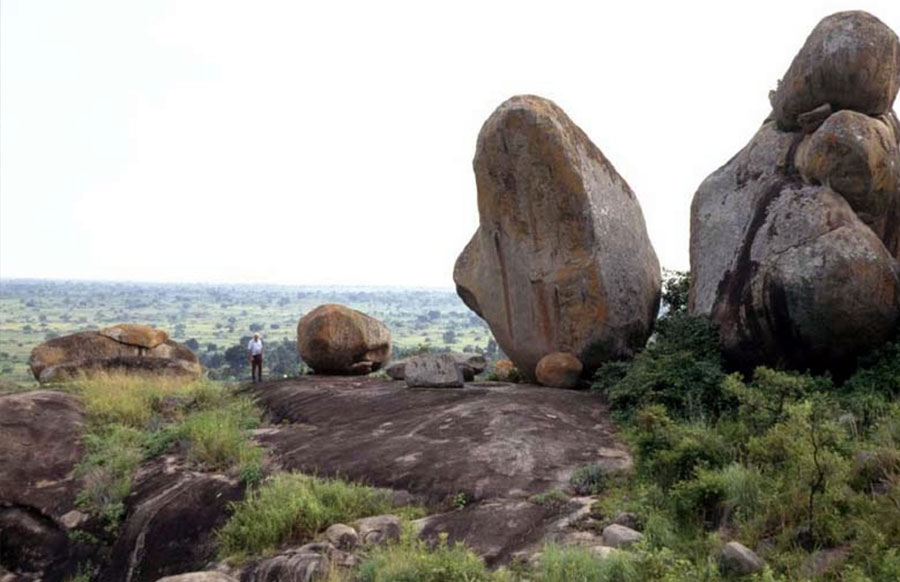
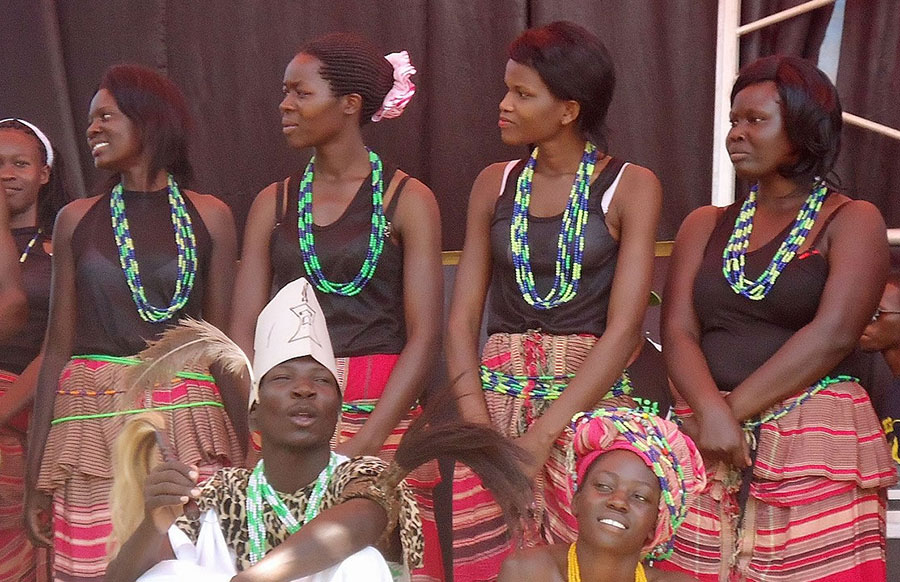
The Bagwere are the guardians of Kakoro rock, a large granite rock which supports an ancient standing stone. This standing stone, located in Pallisa (Bugwere region), has circular paintings made by the early Batwa who used to exist in that area earlier than the 12th century. The descendants of those Batwa (Batwa tribe) are currently found in South western Uganda.
The Bagwere are the guardians of Uganda’s, East Africa’s and Central African’s Neurosurgery history. The first African Neurosurgeon in East and Central Africa was Prof. Jovan Kiryabwire, belonging to the Bagwere tribe. The JMK Foundation, a charity organization founded by Prof. Jovan Kiryabwire’s children is Uganda’s leading organization in the promotion of Uganda’s Neurosurgery capacity.
There are 621,150 Bagwere (2014 census) in Uganda.
The Bagwere are mainly found in Pallisa, Kibuku, Butebo, and Budaka districts.
The Basamia and Bagwe Tribes of Uganda
The Basamia and Bagwe, also called Basamia-Bagwe, are two tribes culturally linked together in Eastern Uganda in Busia district, on the south eastern border of Uganda and Kenya. The Basamia-Bagwe belong to the Bantu ethnic group. They originated from the Chwezi empire and related Bantu migrations from Western central Africa. The Bagwe however have a legend that they (Bagwe) originated from Ethiopia and moved southwards settling around Lake Turkana, before moving to the slopes of Mount Elgon and finally settling in Busia. Concerning this legend, it’s said that the Bagwe, who were Hamites, could have been assimilated into the Bantu people in Eastern Uganda, thus becoming Bantu people. The Basamia on the other hand are believed to have originally been Bantu people who moved to Busia during the Bantu migrations. Both the Basamia and Bagwe were separated from their Western Kenya counterparts after the British colonialists created the Uganda-Kenya border in 1902. Because of their Kenyan counterparts, the Basamia-Bagwe associate themselves with the Luhya people (Bantu tribes in Kenya). Some Basamia associate themselves with the Kenyan Luo people. The Basamia-Bagwe are linked together in the Obwenengo region led by one Omwenengo (King).
The Basamia-Bagwe are agricultural and fishing people. They farm millet, sorghum, cassava, sweet potatoes, vegetables, and also do fishing. Their staple food is cassava which they mix with millet or sorghum to make “Obusuma”, a cassava/cassava-millet or cassava-sorghum bread. Obusuma is served with fish.
Lusamia is the language spoken by the Basamia and Lugwe is the language spoken by the Bagwe. Lusamia and Lugwe are identical languages. The Basamia-Bagwe have a number of dances which include: owaro, ekworo, eboodi and esikudi. Eboodi and ekworo are love dances. Owaro and esikudi are performed when people are happy.

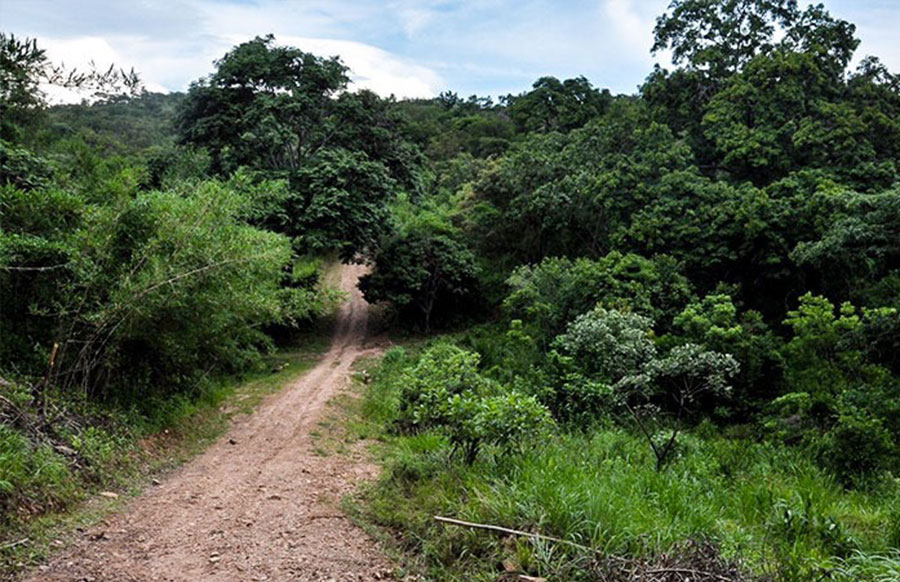
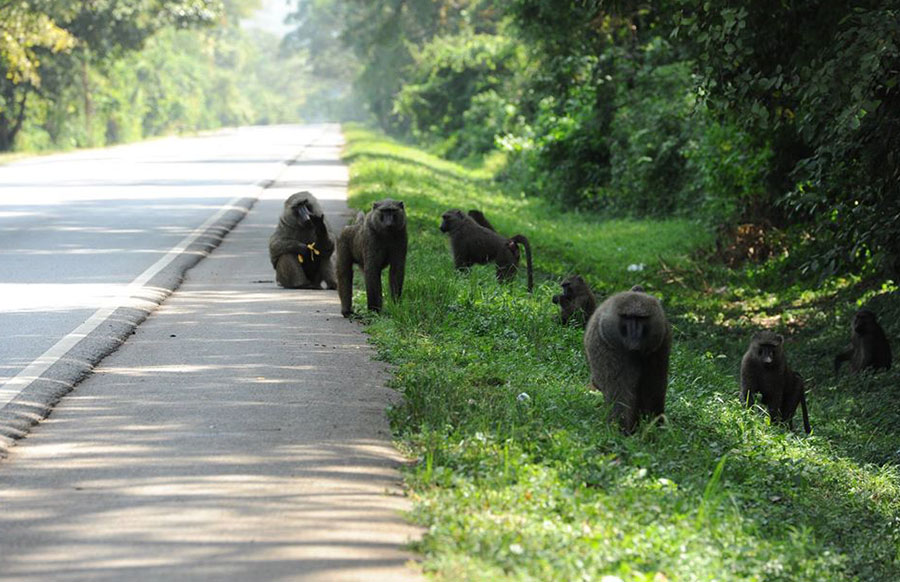
The Basamia-Bagwe are the guardians and custodians of Uganda’s and East Africa’s busiest border post: Busia Border Post. Busia border post located on the international border of Uganda and Kenya, handles Uganda’s largest exports worth UGX 798 billion (US$220 million) as of 2016/2017. Busia border post is the most popular border post in Eastern Uganda, and Busia town is the most popular border town in Eastern Uganda.
The Basamia-Bagwe are the guardians and custodians of Busitema University, one of the popular Science and Technology universities in Uganda and the most popular Science and Technology university in Eastern Uganda.
The Basamia-Bagwe are the guardians and custodians of Busitema Forest Reserve known for it’s Baboons that are easily encountered along the highway crossing the forest. Busitema Forest is a 25 sq km forest reserve home to baboons, monkeys, birds, different rat species and various tree species.
The Basamia-Bagwe are the guardians and custodians of Sangalo Sand Beach Majanji and Majanji landing site North East of Lake Victoria. They are also the guardians of Paradise Beach which is also located North East of Lake Victoria. These two beaches offer the best beach experiences on the Uganda-Kenya border. There are 421,106 Basamia, and 99,884 Bagwe (2014 census) in Uganda. The Basamia and Bagwe are found in Busia district.
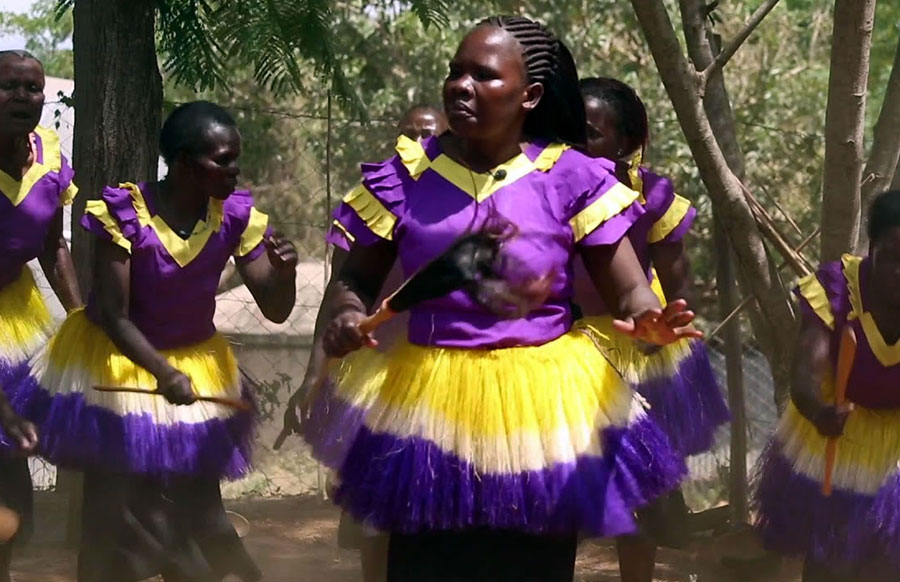
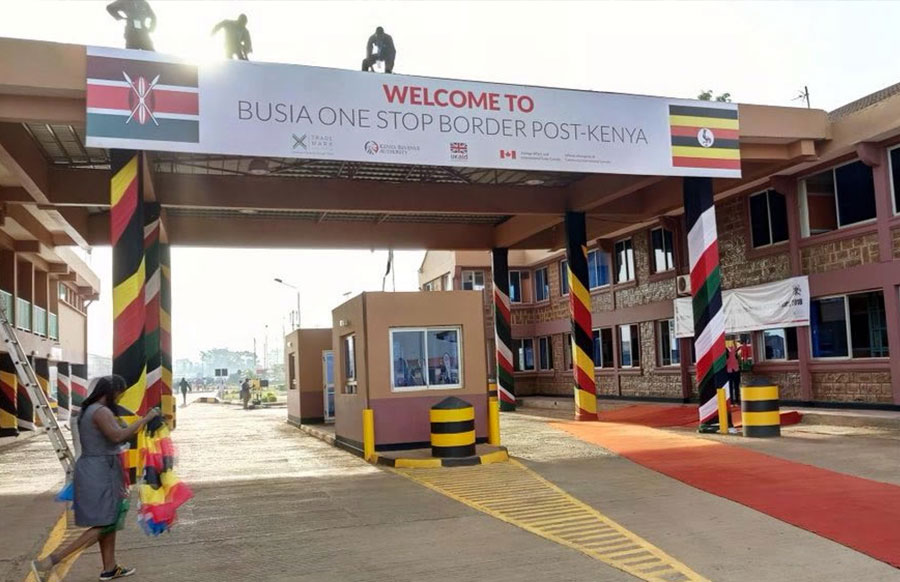
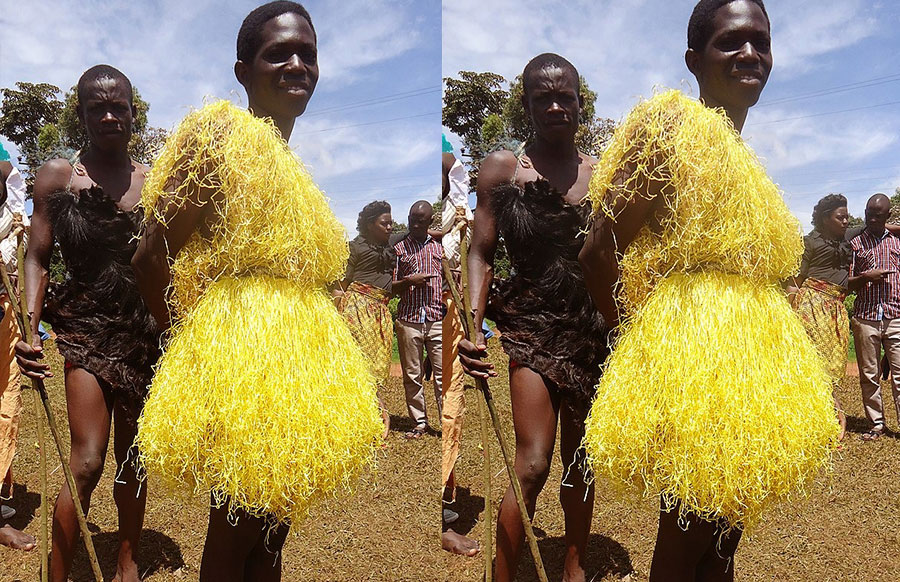
The Basongora Tribe
The Basongora, also called Bacwezi, Bachwezi or Bahuma, are a tribe in Western Uganda in the region of the Rwenzori Mountains on the border of Uganda and DR Congo.
The Basongora belong to a mixture of Bantu and Nilotic ethnic groups. Their legend says that they emerged from the 14th century Chwezi Empire that controlled central Africa. The Chwezi Empire succeeded the Shenzi (Zenj) Empire that controlled east, central, and southern Africa from AD 630 to the 13th century. The Basongora believe that they are direct descendants of the Chwezi Empire whose founding ruler was Empress Kogyere I Rusija-Miryango. In Uganda, the Chwezi Empire occupied the foothills and plains that surround the Rwenzori Mountain ranges. The Basongora are found in Kasese district together with the Bakonzo, and Banyabindi tribes. The Basongora belong to Busongora region led by an Omukama (King). The current Omukama is: Omukama Ndahura II Imara Kashagama.
The Basongora are pastoralists. Their staple food is milk and milk products.
The Basongora dress code is: a shuka (men), and a lesu (women). Men wear the shuka either tied diagonally from the shoulder, or covered around their chests, or covered around their heads. Women wear the lesu in a similar way. The Basongora dance involves moving only the arms and hands. Men stand still as they move their arms while women sit as they move their arms. The arm movements are made on the rhythm of “Endingidi” (Fiddle tuner), or “Enanga” (zither). The Basongora are one of the few communities in the world that do not dance with their feet. The arm movements symbolize cow horns and flight patterns of cattle egrets. The Basongora language is called “Rusongora”.
The Basongora, together with the Banyabindi, are the former inhabitants and guardians of the land occupied by Queen Elizabeth National Park. They were relocated to nearby lands in the 1950s when the national park was created.
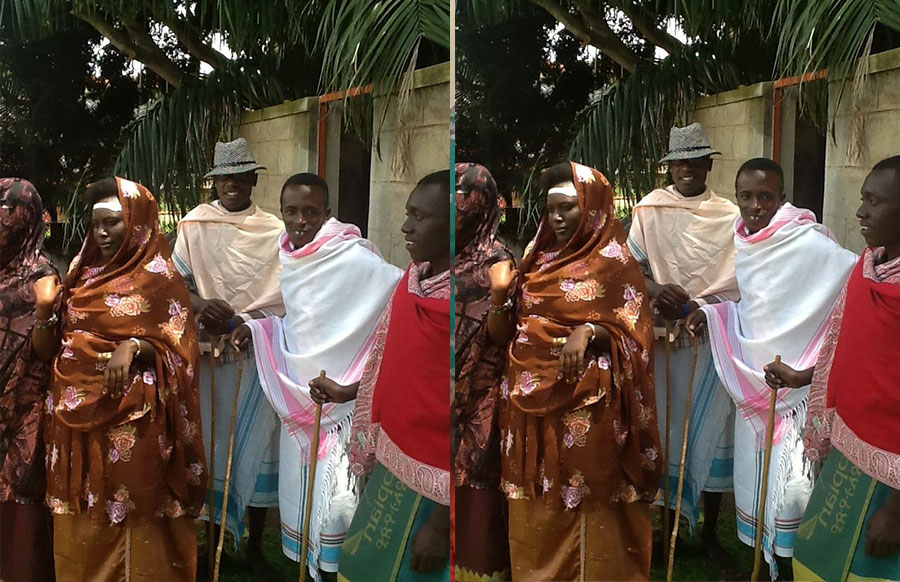


The Basongora are the guardians and custodians of the history of the Chwezi/Bachwezi Empire that gave birth to present-day Bantu Kingdoms, and Bantu people in Uganda. The Chwezi Empire was a large central African empire from the 14th-16th century that was succeeded by the Batembuzi, the founders of the great Bunyoro-Kitara Empire. The first ruler of the Chwezi Empire, Empress Kogyere I Rusija-Miryango, succeeded her father, Emperor Ngonzaki Rutahinduka, who according to Busongora legend, was the 2nd last ruler of the Shenzi (Zenj) Empire. It’s in Empress Kogyere’s rule that Chwezi Empire was created. The Chwezi Empire ended when their beloved cow called “Bihogo” died. Bihogo was an important symbol in the Chwezi Empire. It’s death led to the disintegration of the empire. The history of the Chwezi/Bachwezi is one of the most popular histories in Uganda.
The Basongora, together with the Bakonzo, and Banyabindi tribes, are the guardians and custodians of Kasese region, home to Queen Elizabeth National Park, Uganda’s 2nd largest national park and one of the most popular national parks in Uganda. Kasese region is also home to the Rwenzori Mountains, crater lakes including Katwe salt lake, Lake Munyanyange, and Uganda’s 2nd biggest cement company, Hima Cement.
There are 15,897 Basongora (2014 census) in Uganda. The Basongora are mainly found in Kasese district.
